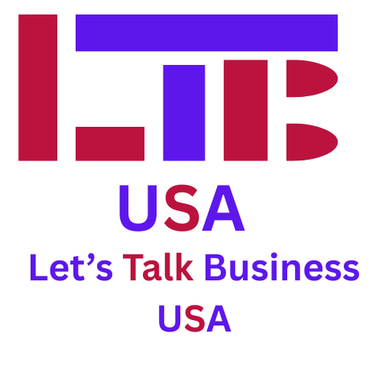Create an excellent Business Presentation or "Sales Pitch."
STARTUPS

A Sales Pitch is an indispensable tool for any business, whether it's to solicit funding or attract suppliers, clients, or employees. In this article, we present some strategies and tips for creating an outstanding presentation.
Create an excellent Business Presentation or "Sales Pitch".
The Business Presentation is perhaps the most important asset you'll have on hand, even more important than your Business Plan.
Furthermore, it may be advisable to create a good Business Presentation first and then develop the Business Plan.
It's a kind of outline of the final product and can serve as a guide to creating a viable product from the start.
It demonstrates how the key elements of the business function and how they contribute to the project's success.
These recommendations will help you create an excellent presentation:
1. Explain who you are in the first minute
You must make it clear what your organization does, what problem you are solving, and why you are the ideal person to solve it.
Don't go on and on with long introductions. Stay focused and get to the point. Investors won't be impressed by a complicated presentation.
It should be something they can read and understand in less than 10 minutes.
2. Use language that everyone can understand
If your business uses complicated technology, or if it's difficult for non-experts to understand it, or even if there are terms that aren't common, you should explain them in a simple way that anyone can understand.
Don't use technical language unless your audience is made up of specialists in the field.
3. Start from the bottom to the top
A very common mistake in business presentations is using a top-down model to forecast financials.
This means analyzing the overall market and using this information to define the target demographic and determine the percentage you think you can capture.
This model is often overly optimistic and ultimately unrealistic. With the bottom-up model, you use your current situation and capabilities to project where you can reasonably go from there.
4. Use the 10/20/30 rule
The 10/20/30 rule is to cover your presentation with 10 slides in 20 minutes and text in 30-point font.
But the reality is that your presentation should be completed in 7 minutes, leaving 13 minutes for questions and discussion.
By turning it into a conversation, you'll be able to identify which part of the presentation isn't working and explain any shortcomings you may find.
Consider each slide as an element of your company blueprint.
Start broadly and drill down into the details with each slide.
Here are some recommendations for each slide:
• Introduction Slide: Include the organization name, your name, title, and contact information. On this slide, introduce yourself and briefly explain the momentum your organization has gained. If you are just starting out, talk about how you have built your credibility (i.e., training, specialization, etc.).
• Slide 1: Describe the problems that arise in the market where you will compete. Then, you will explain how you will solve them.
• Slide 2: Explain how you will solve these problems. This is your value proposition. If your product is physical, include an image of it on this slide.
• Slide 3: Present your business model. How you will generate revenue, who will pay for your products or services, your distribution channels, and your gross margins.
• Slide 4: What is the magic of your product? Describe the technology, secret ingredient, or magic behind your product. Specifically, how does it create value for the customer?
• Slide 5: Describe your market positioning. Describe the competitive advantages of your proposal.
•Slide 6: Marketing and sales. You must convince your audience that you have a solid and coherent strategy for entering the market in an effective way that will allow you to generate income.
•Slide 7: Competition. Talk about your competitors and explain what sets you apart from them and what will help you compete in the market.
• Slide 8: Management Team. Describe the key players: the board of directors, advisors, and major investors. Explain how they comprise and complete the management trinity: production, marketing, and financial expertise. If you have any deficiencies in the team, explain how you plan to address them.
• Slide 9: Financial Projections. You should include a projection of prospects and customers, revenue, costs, and profits for the first 3 years. Most businesses should be able to demonstrate a profit by the third year of operation.
• Slide 10: Objectives. Explain the current state of your product or service, what the short- term future looks like, your achievements to date, and how you’re going to use the money you’re trying to raise. Even if you’ve been in business for a while, explain what you’ve achieved so far and what the trajectory has been. Show the momentum of your business.
Some tips:
ABefore giving a presentation to potential investors, be sure to go over it several times with your mentors and colleagues.
Correct what doesn't work and try to reduce the word count on your slides.
If you need to use notes, consider using a program that allows you to add notes within the presentation.
Once you've given a presentation to investors, you can continue to review and refine it as a basis for developing a strong business plan.
A solid presentation can also be used as a basis for creating different variations for different target audiences. For example, as a more general introduction to the business or even one that can be used later to recruit prospective employees.
